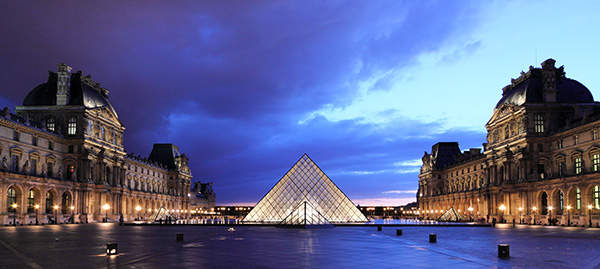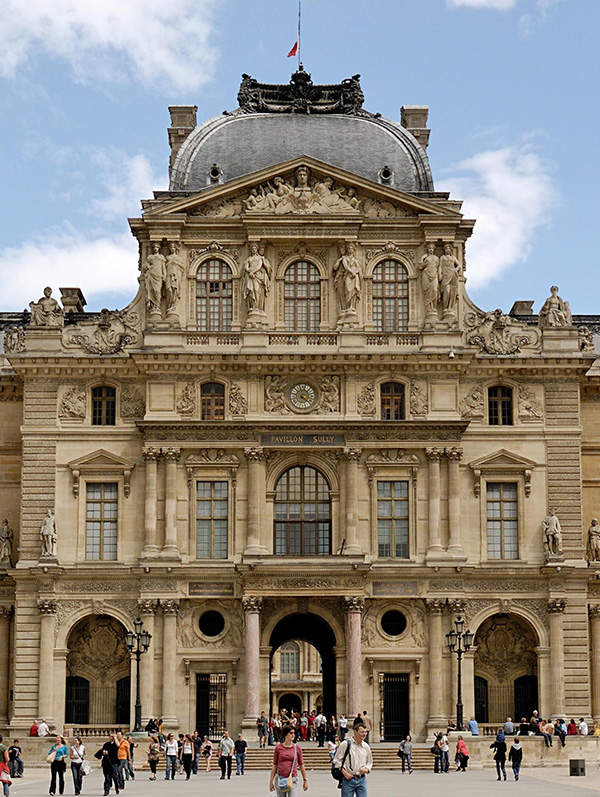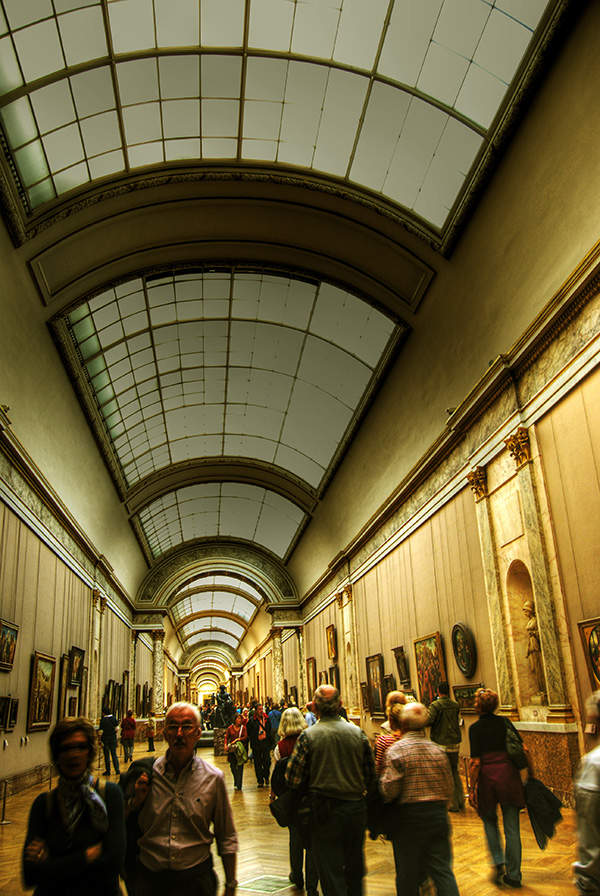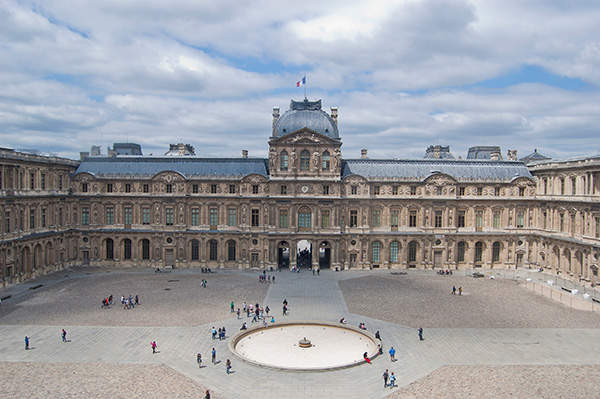
Musée du Louvre in Paris, France, is one of the largest museums in the world. Part of the Louvre Palace built in the 12th century, the museum opened in August 1793 and currently houses over 100,000 items in an area of 60,600m² (652,293ft²).
Current collections at the museum include over 7,500 paintings, the Mona Lisa, Islamic art, sculptures dating back to the 1850s, Egyptian antiques, and Greek and Roman display pieces.
Louvre history
The Louvre was originally a fortress built in 1190 to protect the city of Paris. In 1364, Raymond du Temple, architect to King Charles V, undertook a transformation of the fortress into a royal palace.
Apartments decorated with large ornate windows were built near the central court. An elaborate spiral staircase called the ‘grande vis’ was constructed to connect the upper floors, while the interiors contain lavishly decorated rooftops, sculptures and panelling.
Following Charles VI’s death, the Louvre went through a series of changes. Under the reign of François I, the Tuileries palace was built and the two buildings were linked to create the Grande Galerie.
In 1546, new Renaissance-style buildings were built at the Louvre in place of the west wing, designed by Pierre Lescot. Jean Goujon was responsible for decoration of the buildings, including the Salle des Caryatides (Hall of the Caryatids) and the Pavillon du Roi (King’s Pavilion). A small wing called the Petite Galerie was built to serve as the starting point for the long corridor between the Louvre and the Tuileries palace.
The Galerie du Bord de l’Eau (Waterside Gallery) was constructed from 1595 to 1610. The long corridor or the Grande Galerie provided a direct link between the Louvre’s apartments and the Tuileries palace. Attention towards the Louvre waned until 1625 when development was restarted.
In 1639, the Pavillon de l’Horloge, now called the Pavillon Sully, was built by the architect Jacques Lemercier. Several additions to the Louvre were made between 1655 and 1756, including the Cour Carrée, the Cour du Sphinx and the Colonnade façade.
In 1761, the Assemblée Nationale declared that the Louvre will house all monuments of the sciences and the arts. The Museum Central des Arts opened on 10 August 1793 and displayed paintings of the French royal family.
Related project
Louvre Abu Dhabi – Art Gallery and Museum, United Arab Emirates
The Louvre Abu Dhabi is about to become one of the world’s premier art galleries. The new gallery has brokered a deal with the Louvre in Paris (French Museums Agency and the Ministry of Culture and Communications) to adopt the name, lend works of art and stage special exhibitions.
The museum acquired various pieces from Italy, Egypt, Spain and Algeria for display from 1798 to 1851. Additional buildings, interior decorations and decorative paintings were carried out during this period.
Creation of the existing Louvre commenced under the reign of Napoleon III who ordered the construction of new buildings. In 1852, the Musée des Souverains was opened which displayed treasures from the French royal family. The Cour Napoléon was built at the heart of the Louvre in 1857. Several paintings and artwork were later acquired and became part of the Louvre’s collections.
The modern Louvre
During the Paris Commune, the Tuileries palace was destroyed. The ruins of the palace were demolition in 1883 making way for the modern Louvre. In 1888, the Susa galleries were opened displaying discoveries from Iran.
In 1926, a project to expand the exhibition space at the museum was launched. Under the project, a glazed roof was placed over the Cour du Sphinx, while new rooms and existing galleries were also refurbished.
During World War II, the museum was closed and the majority of pieces on display were evacuated. The museum reopened in September 1940 and was later expanded and collections were reorganised into various galleries.
The Grand Louvre project
In 1981, the then-president François Mitterrand announced his plans to transform the Louvre into a museum in its entirety. The Finance Ministry, which occupied the Richelieu wing, was shifted to new premises and the project was launched.
The development included reorganisation of the museum and construction of new spaces, as well as the Pyramid. The Etablissement Public du Grand Louvre was given the responsibility of undertaking the work, with Architect Ieoh Ming Pei was entrusted with the project.
The main and most distinctive feature was the glass Pyramid located in the centre of the Cour Napoléon. Opened in March 1989, the Pyramid serves as the entrance for the main exhibition hall of the museum.
Other additions included an auditorium and public amenities, while exhibition spaces were expanded and glazed roofs were added to the inner courtyards, providing new spaces for display.
Phase two of the project led to the opening of the Sackler wing and refurbishment of the exhibition space of Egyptian antiques.











